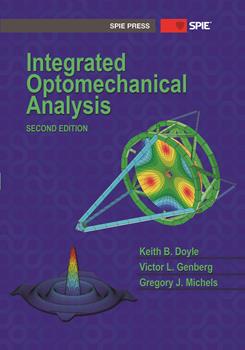|
Optical elements of high-performance imaging systems must meet demanding surface-error requirements to maintain precision pointing and overall image quality. For example, surface figure requirements typically must be maintained to fractions of a wavelength, and positional errors must meet micron and microradian tolerances. Finite element analysis is typically used to evaluate surface errors due to mechanical and environmental loads including inertial, dynamic, thermo-elastic, assembly loads, coating effects, adhesive shrinkage, CTE inhomogeneity, and others. Integrating the FEA-derived optical surface errors into optical design software provides a means to predict optical behavior that can account for optical surface errors due to complex environmental conditions and concurrent disturbances. This class of analysis can be performed to predict optical performance as a function of time and provides insights beyond which is achievable with performance budget estimates. The impact of optical surface errors on optical performance can also be predicted using optical sensitivity coefficients. Use of optical sensitivity coefficients and matrices are convenient to perform "closed-loop" design trades and sensitivity studies that are beneficial early in the design process. |
|
|


